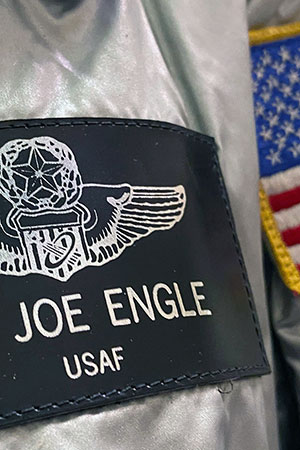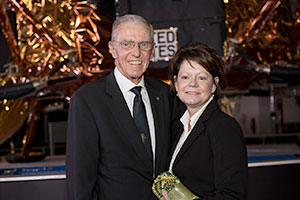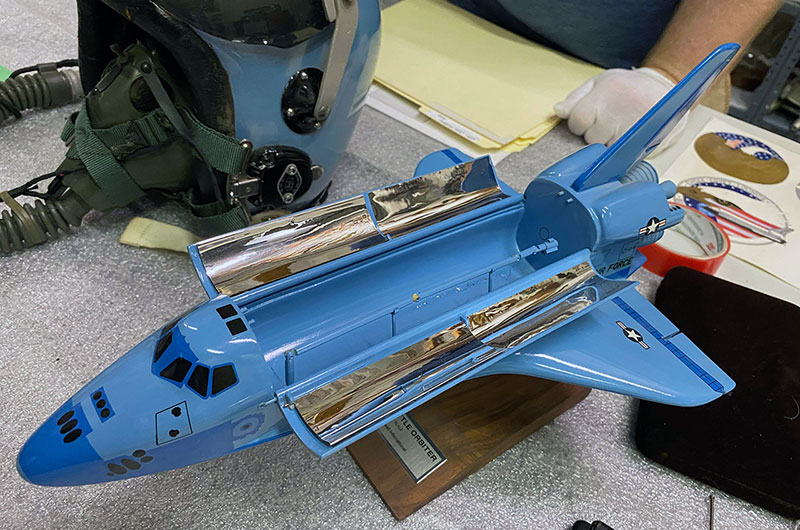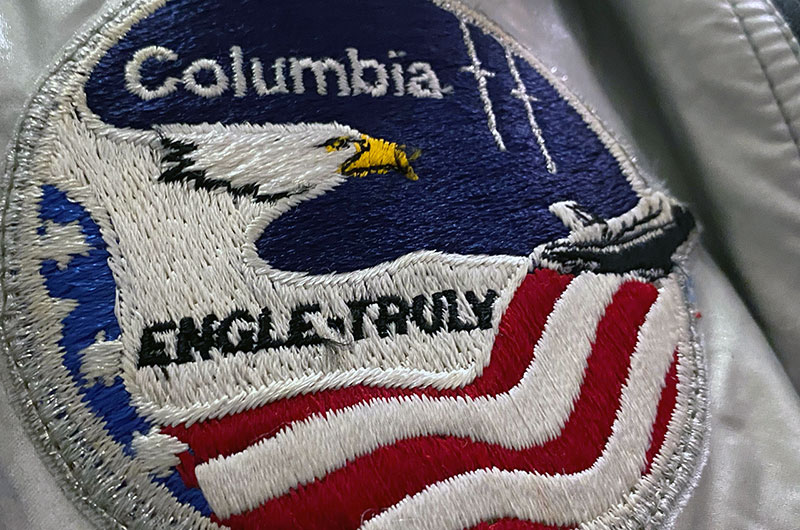 advertisements advertisements
|

|
Astronaut's rocket plane and space shuttle artifacts to go on display
May 25, 2021 — The rocket plane manual and space shuttle logs kept by the first astronaut to fly on two different winged vehicles into space will be showcased by a museum dedicated to the history of experimental aircraft.
The Astronaut Joe Engle Archive Collection is set to open on June 4 at the EAA (Experimental Aircraft Association) Aviation Museum in Oshkosh, Wisconsin. The display comes a year after Joe Engle and his wife, Jeanie, donated their archives to the EAA Aviation Foundation in 2020.
The new exhibit will feature some of the flight gear that Engle used when piloting the North American X-15 hypersonic rocket-powered aircraft, including on three flights that soared above 50 miles (80 km), the U.S.-defined altitude separating Earth from space. The museum will also display artifacts from Engle's 20 years as a NASA astronaut, including his acceptance letter as a member of the fifth group of astronaut candidates in 1966.
After serving on the backup crew for Apollo 14, the third successful lunar landing, and almost making it to the moon himself, Engle helped lead early approach and landing tests aboard the prototype space shuttle Enterprise. He then commanded two missions, including STS-2, the second flight of the program and first to prove that the winged orbiter was reusable as designed.
The museum will also display items from Jeanie Engle's nearly 40-year career at NASA, first as chief information officer and then and chief knowledge officer at Johnson Space Center in Houston, including her Silver Snoopy Award for her role in ensuring human flight safety and mission success.
"The personal archives donated to EAA by Joe and Jeanie Engle are especially important because of the breadth of experiences they had in the programs that stretched the boundaries of flight," Ron Connolly, director of the EAA Aviation Museum, said in a statement. "Joe's X-15 experience in the 1960s took us to the edge of space, followed by his experience training in the Apollo program and his leadership in the testing and early missions of the space shuttle that helped create the ongoing manned space efforts that continue today."
The Engles are scheduled to be at the EAA Aviation Museum on June 4 to take part in a dedication and ribbon cutting for the new display. The Astronaut Joe Engle Archive Collection is the EAA's second exhibit devoted to an early pioneer of spaceflight. Gemini and Apollo astronaut Frank Borman, who commanded the first crewed flight to the moon, donated his memorabilia and papers in 2018.
The Engle exhibit will be located adjacent to the Borman Collection on the main level of the museum
Prior to donating his and his wife's archives, Engle was a frequent speaker at the EAA's annual AirVenture fly-in and delivered the keynote for the association's 2017 Wright Brothers Memorial Banquet. In addition to his X-15 and NASA flight experience, Engle began his career in the U.S. Air Force and flew 185 different types of aircraft, logging more than 15,400 hours in flight, including 9,000 hours in jet aircraft. In total, he spent 9 days, 8 hours and 30 minutes in space. |
|

Joe Engle's name tag displays the U.S. Air Force astronaut wings that he earned flying the X-15 rocket plane before flying two space shuttle missions for NASA. (EAA)

Joe and Jeanie Engle as photographed together at the National Air and Space Museum in 2018. (NASA/Aubrey Gemignani) |

NASA astronaut Joe Engle's U.S. Air Force-blue space shuttle model, a flight helmet and other artifacts being prepared for display at the EAA Aviation Museum in Oshkosh, Wisconsin. The Astronaut Joe Engle Archive Collection opens on June 4, 2021. (EAA) |

NASA astronaut Joe Engle's STS-2 mission patch, representing the second flight and first reuse of the space shuttle orbiter Columbia in 1981. (EAA) |
|

© 1999-2025 collectSPACE. All rights reserved.
|
|

|

|
